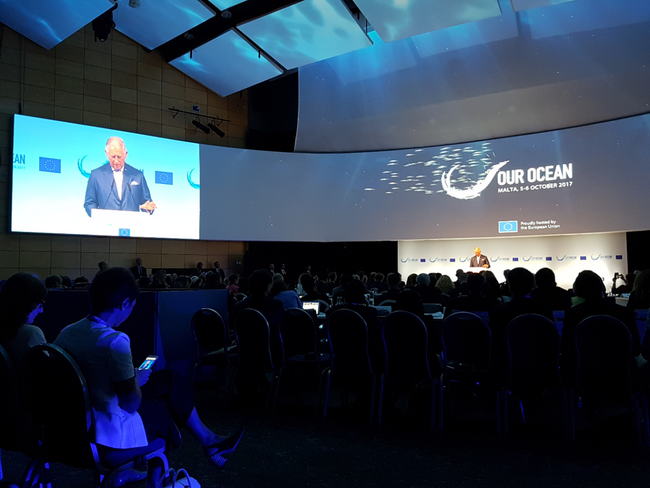05.10.17 | Representatives of the Leibniz Centre for Tropical Marine Research (ZMT) and the Institute for Advanced Sustainability Studies (IASS) are currently attending the influential "Our Ocean" conference held in Malta from October 5 - 6. ZMT’s Prof. Dr. Anna-Katharina Hornidge and Sebastian Unger from IASS are flying the flag for the ZMT-led EU COST Action “Ocean Governance for Sustainability Network”, of which they are chair and workgroup leader 'Area-based Management' respectively.
At the conference, the constitution of the “Ocean Governance for Sustainability Network” is this year being entered as one commitment from Europe to the implementation of the Sustainable Development Goal 14 of the United Nations.
Commitment (Marine Protected Areas):
The Leibniz Centre of Tropical Marine Research (ZMT) reaffirmed its commitment to bring together scientists from 26 EU Member States to create and coordinate a research network for transdisciplinary research on ocean governance in the EU with the support of a grant of EUR 600,000 from the European COST programme. The network will identify ocean governance challenges in close cooperation with actors and stakeholders and provide integrated advice on governance tools and mechanisms to improve ocean related decision-making focusing on (a) land-sea interactions; (b) area-based management; (c) seabed resources; (d) nutrition security; (e) ocean acidification and climate change; and (f) fisheries governance.
See also https://ourocean2017.org/our-ocean-commitments
About the commitments at the "Our Ocean" conference:
The "Our Ocean" conference aims at committing to action, investing in solutions and mobilising change-makers from government, business and civil society to turn innovative ideas into reality. These include commitments to reduce marine pollution, manage aquatic resources sustainably, mitigate climate change, and set up marine sanctuaries. Since 2014, the Our Ocean conference has brought about 250 concrete actions, committing over 8 billion Euros and designating nearly 10 million square kilometres as new Marine Protected Areas (MPAs).





